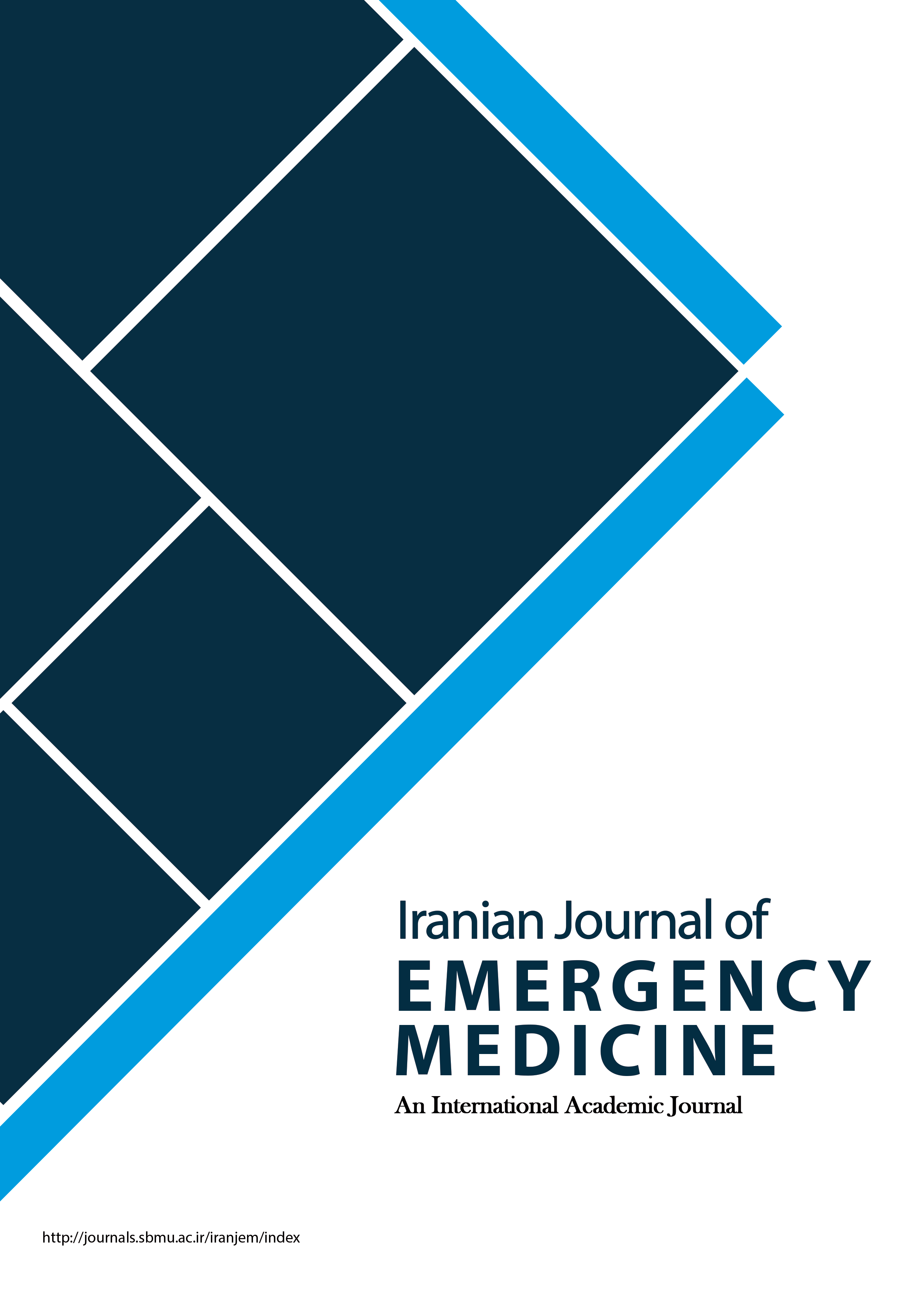Intravenous Morphine vs. Acetaminophen for Pain Management in Suspected Acute Cholecystitis Cases; a Clinical Trial
Iranian Journal of Emergency Medicine,
Vol. 3 No. 3 (2016),
21 September 2016,
Page 91-86
https://doi.org/10.22037/ijem.v3i3.12823
Introduction: Acute cholecystitis is one of the most common surgical emergencies and a major cause of acute abdomen all over the world. One of the most important measures taken for these patients in emergency department (ED) is pain management. Therefore, the present study aimed to compare the effectiveness of intravenous acetaminophen and morphine for managing abdominal pain caused by acute cholecystitis. Methods: The present study is a single blind randomized clinical trial that evaluates and compares the effectiveness of morphine sulfate and intravenous acetaminophen in pain management of patients with suspected acute cholecystitis aged above 18 years with stable vital signs, who were admitted to ED. To gather data a pre-designed checklist, consisting of demographic data, pain severity on arrival and 30, 60, and 90 minutes after injection, vital signs on arrival, presence or absence of side effects, and clinical findings, was used. Finally, the 2 groups were compared regarding pain relief and side effects using SPSS 18. Results: 70 patients with the mean age of 55.2 ± 16.3 years were randomly allocated to 2 groups of 35 (61.4% female). 38 (54.3%) patients had only one ultrasonogrphic indication for acute cholecystitis, while 32 (45.7%) had 2 or more. Mean pain severity was significantly different between the 2 groups 30, 60, and 90 minutes after drug injection (p < 0.05). However, nausea (p = 0.617) and vomiting (p = 0.150) rates after injection were not significantly different between the groups. Fever was significantly lower in acetaminophen group (p < 0.001). Conclusion: Based on the results of the present study, morphine is more efficient than acetaminophen in pain relief during the initial 30 minutes after injection. However, although the difference in pain relief was statistically significant between the groups, 60 and 90 minutes after injection, it was not clinically important (less than 3 score). On the other hand, intravenous acetaminophen was simultaneously effective in controlling fever among the patients.



